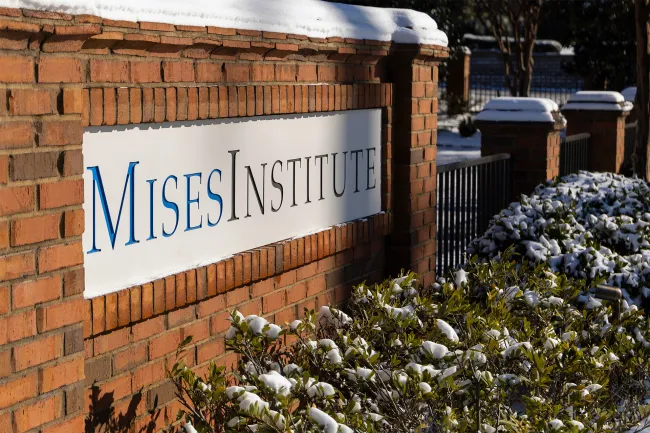Lawrence Mead’s Political Breakdown (2025) is not a book of partisan skirmishing or quick diagnoses. It is instead a cultural meditation on why the United States, a society that once seemed uniquely dynamic, confident, and cohesive, now struggles to maintain the very norms that powered its rise. For Mead, the story of American decline is not simply about inequality, polarization, or stagnant wages, though these are real enough. It is about the erosion of the ethic of individualism that once held the society together. The United States—unlike many other nations—thrived because it demanded that its citizens take responsibility for themselves. Families, schools, and communities expected individuals to cultivate discipline, ambition, and civic responsibility. The problem today, Mead insists, is that these norms no longer command the same authority. What was once a shared cultural foundation has fractured, and the resulting void has left Americans unable to sustain progress or govern themselves effectively.
Education policy provides one of the clearest illustrations of this thesis. Mead revisits the landmark Coleman Report of 1966, which was intended to measure whether unequal school resources accounted for differences in student achievement. Its conclusions shocked policymakers: the quality of schools mattered far less than family background. Children from intact and disciplined households outperformed their peers regardless of school resources, while children from unstable families struggled even in well-funded environments. This finding challenged the assumptions behind the War on Poverty, which poured enormous resources into schools and early education programs in the belief that equalizing institutional conditions would produce equal results.
Head Start—the most famous of these interventions—appeared promising at first, as children displayed modest gains in early test scores. Yet by the third grade, those gains had evaporated, and participants had fallen back into patterns of underachievement. For Mead, the lesson is obvious but often ignored: when the family fails to transmit responsibility and discipline, institutions cannot fill the void. Culture matters more than the classroom, and policies that deny this reality are destined to fail.
This insistence on culture also shapes Mead’s interpretation of black progress. He argues that African Americans were advancing before civil rights legislation, albeit unevenly and under difficult conditions. In the first half of the twentieth century, blacks displayed high marriage rates, strong church involvement, rising literacy, and steady gains in income and employment. Segregation imposed cruel limits, yet within those constraints, family cohesion and communal discipline allowed steady improvement. The tragedy, Mead observes, is that after the civil rights revolution removed formal barriers, the cultural underpinnings of progress collapsed. Out-of-wedlock births soared, crime rates escalated, and dependency on welfare deepened. The sociologist Daniel Patrick Moynihan foresaw this unraveling in his 1965 report on the black family, warning that the collapse of paternal authority would jeopardize advancement. His predictions were dismissed at the time as racist alarmism, but history vindicated his insight. In Mead’s view, the paradox is stark: blacks were moving upward when family stability remained strong, and faltered when it disintegrated, despite the new opportunities that legal equality provided. Progress was less about the removal of barriers than about the preservation of cultural supports, and when those supports gave way, the results were devastating.
The family emerges here not as a private institution but as the essential transmitter of culture. Children acquire discipline, ambition, and the ability to delay gratification not from government programs but from the daily routines of family life. When the family disintegrates, schools cannot replace it, and the wider society must absorb the consequences in the form of crime, welfare dependency, and social disorder.
Similarly, Mead extends his cultural analysis to immigration, where the transformation wrought by the 1965 Immigration and Nationality Act has reshaped American society. The earlier waves of European immigrants, though not perfectly aligned with the Anglo-Protestant culture of individualism, were close enough to adapt within one or two generations. They entered a society that demanded assimilation, and the pressure to conform produced remarkable results. The post-1965 influx, however, came primarily from Latin America, Asia, and Africa, regions with collectivist traditions that placed greater emphasis on kinship loyalty, hierarchy, or deference to authority than on individual initiative. At the same time, American society had abandoned its older insistence on cultural conformity, preferring instead to celebrate diversity and minimize assimilation. The result has been a profound divergence in outcomes.
Jacob Vigdor’s research on assimilation provides the empirical backbone for this analysis. Vigdor developed an index to examine how dissimilar immigrants are from native-born Americans across three dimensions: economic assimilation, cultural assimilation, and civic assimilation. His findings reveal a troubling picture. While immigrants generally perform relatively well in economic terms—employment, income, and wealth—assimilation in culture and civics lags far behind. Language acquisition is slower than in earlier generations, intermarriage rates are lower, and differences in marital patterns and family structure remain persistent. Civic assimilation is also weaker, with lower rates of naturalization and participation in activities such as military service. Most strikingly, overall assimilation today is much lower than it was a century ago, and among all immigrant groups, Mexicans remain the least assimilated. This persistence of cultural distance matters enormously, because it undermines the individualistic ethos that Mead regards as essential for American success. Immigrants are no longer compelled to adapt as earlier arrivals were, and the consequence is a society in which cultural fragmentation persists across generations.
Hispanics illustrate these challenges most clearly. Their familism generates warmth, solidarity, and resilience, but it also limits individual ambition. When loyalty to the family takes precedence over personal advancement, educational attainment suffers and civic engagement falters. This pattern explains why, even after decades in the United States, many Hispanics continue to lag in measures of assimilation. Blacks and Hispanics thus reach the same point from different trajectories: both remain handicapped by the absence of deeply-ingrained individualism. Blacks suffer from welfare dependency and family breakdown; Hispanics from a cultural inheritance that prizes kinship over ambition. In both cases, the result is diminished upward mobility in an environment that rewards independence and initiative.
East Asian Americans present a different case. They outperform other minority groups in education and income and often surpass whites. Their success reflects cultural traditions of discipline, respect for authority, and an extraordinary capacity for hard work. Christian Goldhammer’s 2012 study highlights the importance of non-cognitive skills in this process, showing that Asians score higher on measures of non-cognitive traits that yield a wage advantage even when environmental factors are controlled for. Yet their cultural orientation toward deference and harmony also curbs assertiveness in leadership roles. East Asians thrive in structured settings such as schools and corporations but are less prominent in executive and political life. Their success thus demonstrates that culture can equip groups for extraordinary achievement, but it also illustrates that not all cultural strengths align equally with the demands of American public life, which prizes assertiveness and self-promotion.
However, the larger theme that emerges from Political Breakdown is the uniqueness of Western culture. Shaped by Christianity and centuries of historical development, the West cultivated an ethic of individual responsibility, initiative, and voluntary cooperation that made democratic self-government and modern capitalism possible. Many other societies, by contrast, have organized life around kinship, hierarchy, or communal obligation. These systems foster solidarity but not the independent individual. Mead insists that the decline of American politics cannot be understood apart from the weakening of this ethic. Adverse social development—crime, welfare dependency, failing schools, and workplace dysfunction—is the result of cultural erosion. When families no longer transmit discipline, when immigrants are not assimilated, and when groups embrace grievance over responsibility, the cultural foundations of democracy collapse.
Political Breakdown is a powerful and unsettling book. Its strength lies in Mead’s refusal to evade cultural explanations, even when they offend prevailing sensibilities. Yet it would have been stronger had he engaged directly with the growing empirical literature on cognitive and non-cognitive group differences, which reinforce his central claims with precision. Nonetheless, Mead’s message is clear: America’s political crisis is not simply partisan polarization but the visible expression of a deeper cultural breakdown. Without a renewed commitment to individualism, responsibility, and assimilation, the nation will remain mired in division and decline.


